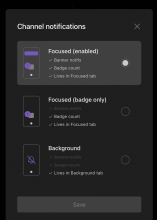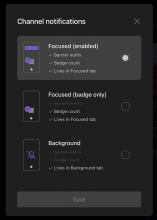We previously were fetching all-notifs.svg from S3. It took a second for the SVG to download, which led to the page reflowing. We got around the reflowing issue by explicitly stating the height/width of every SVG asset so there was some "placeholder space" left for the asset to fill once it loaded. This led to an expensive process when adding SVG assets to web.
Instead, we can convert the SVG into a React component using SVGR (https://react-svgr.com/playground/) and include it in the repo. This also lets us avoid fetching the asset once the app has loaded.
Depends on D4785


We definitely should return something from this lambda since otherwise it is useless to assign it to variable.
If we find that we don't have permissions then just calling await this.requestAndroidNotificationsPermission(); would result in a prompt asking for notifications permissions. However if the user grants those permissions then hasPermissions is still falsy (since promise returned nothing), so deviceToken will be set to null. Nevertheless permissions are actually granted byt the OS, so the state on the device and keyserver would heal itself on next render.
This differential fixes this case so that if user grants permissions correct state is achieved immediately without need for additional re-render to heal the state.